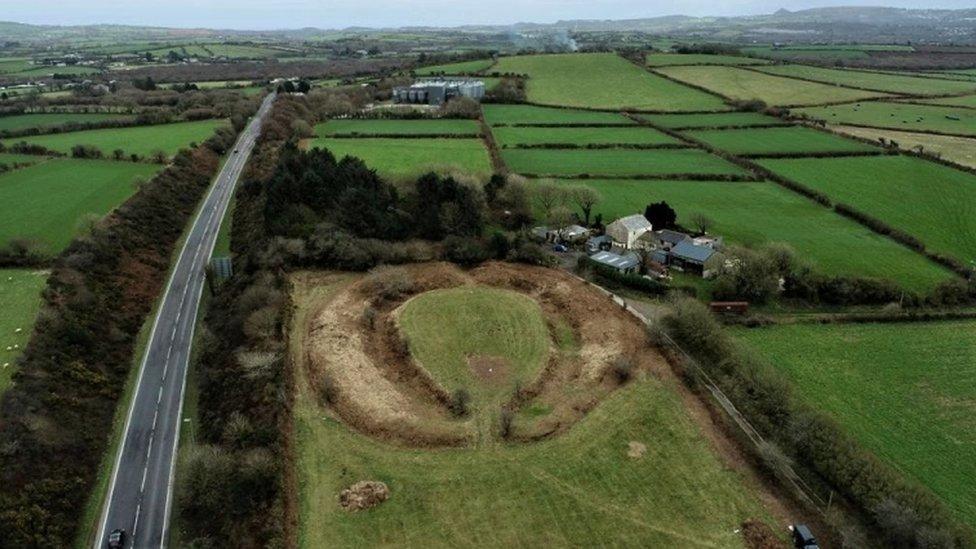Cornwall: Unknown stone circle found in Cornwall
- Published
- comments

An ancient stone circle has been dug up in Cornwall.
Archaeologists have found evidence of an unknown stone circle within a prehistoric ritual site at Castilly Henge near Bodmin, Cornwall.
Volunteers worked for over 100 hours to clear scrubs and branches, so researchers could use modern technology to map the stone circle.
This mapping found at least seven regularly spaced pits which formed a crooked horseshoe shape.
Castilly Henge
Volunteers spent hours helping to clear the area
The discovery was made by Historic England and the Cornwall Archaeology Unit, during the site's first modern archaeological survey to understand the area better.
Castilly Henge is believed to have been built during the late Neolithic period, around 3,000-2,500 BC - so around five thousand years ago.
A henge refers to a circular or oval-shaped bank with a ditch around the inner edge made during the Neolithic period, also known as the Stone Age.
There are fewer than 100 henges still surviving in Britain, according to English heritage, the famous one you might know is Stonehenge.
This recent horseshoe shaped oval is 2225ft long by 205ft wide (68m by 62m) and it's believed it would have been used a place for gatherings and ritual activities.
Historic England say there is evidence to suggest it would have been used as a theatre in the Middle Ages and used to store guns during the English Civil War.
Over the winter, 13 people gave 111 hours of their time and now the monument is looking so much better
The circle is marked out here by Historic England volunteers
In 2021 Castilly Henge was added to a monument management schemed by Historic England.
The aim of the scheme is to look after and repair monuments on their at-risk list.
Ann Preston-Jones, a project officer at Historic England, said: "The research at Castilly Henge has given us a deeper understanding of the complexity of this site and its importance to Cornish history over thousands of years.
"It will help us make decisions about the way the monument is managed and presented, so that it can be enjoyed by generations to come."
- Published12 January 2022
- Published17 May 2022
- Published22 June 2020
